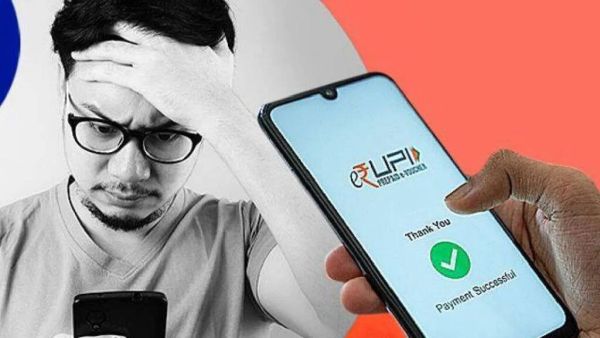
In today’s digital era, UPI (Unified Payments Interface) has become an integral part of our life. From buying vegetables to sending money to friends, everything happens in just one click. Apps like Google Pay, PhonePe, Paytm have almost eliminated the hassle of keeping cash. But along with this facility, there is a common problem, which can bother anyone – Transaction fails, but money is deducted from bank account.
This is a situation in which the money sender is deducted from the account of the sender, but who has been sent (receiver), does not deposit in his account. In such a situation, it is natural to get nervous. Did my money sink? What to do now? These questions immediately start coming to the mind.
If you too have ever faced this situation or want to avoid it in future, then there is nothing to worry about. The Reserve Bank of India (RBI) and NPCI (National Payments Corporation of India) have made clear rules for this. In this article, we will tell you the step-by-step that if your UPI transaction fails and the money is deducted then what should you do.
First of all understand, why does this happen?
There can be many technical reasons behind money deduction and transaction failure, such as:
- Network problem: Weak internet connection between your or receiver’s bank server.
- Bank server down: Sometimes the bank’s server remains down due to maintenance or any technical fault.
- Transaction Timeout: If the payment process is not completed in the prescribed time, the transaction automatically fails.
- Wrong UPI ID or Details: This can also happen even after putting incorrect information.
In any case, the money comes out of your account and gets trapped in an intermediary pool. It is from here that he has to go back to your account or to the receiver’s account.
Follow this full process to get the money back
If this happens to you, do not panic and follow these steps in peace:
Step 1: Wait from 24 to 48 hours (The Waiting Game)
This is the first and most important step. In more than 90% cases, cut money Automatically (Auto-Reversal) Your bank account returns within 24 to 48 hours. According to NPCI rules, banks have to return such trapped money within a certain time (T+1 day, ie the next day of transaction).
- What to do: Do not reach any conclusion immediately. Keep checking your UPI app and bank statement for the next 1-2 days.
Step 2: File a complaint in UPI app itself
If the money does not return even after 48 hours, then you have to file a complaint. The easiest way is to use the same UPI app from which you paid.
- How to do:
- Open your UPI app (Google Pay, PhonePe, etc.).
- Go to the ‘Transaction History’ or ‘History of Transaction’ section.
- Click on that failed transaction.
- Here you will get an option like ‘Raise Complaint’, ‘Help’ or ‘Report the problem’. Click on it.
- Select the details of your problem (eg ‘Amount Debited but Transaction Failed’ and file a complaint.
- Why is it necessary: By doing this, your case is officially registered with the app and the concerned bank. You also get a complaint ID.
Step 3: Contact your bank
If a solution is not available even after a few days of complaining in the app, the next step is to contact your bank directly (the bank from which the money is deducted).
- How to contact:
- Customer Care: Call your bank’s toll-free customer care number and make them your failed transaction UPI Transaction ID (or UTR number) Tell me You will find this ID in transaction details.
- Email: Write a detailed email with complete information on the bank’s official support email ID.
- Branch visit: You can also file a written complaint by going to your nearest bank branch.
Step 4: Complain on NPCI portal
If your bank does not solve your problem within 30 days, you can pursue the matter. For this, you can directly visit the NPCI’s Grievance Redressal Mechanism.
- How to do:
- Go to the official website of NPCI (npci.org.in).
- Go to UPI in the ‘What we do’ tab and choose ‘Dispute Redressal Mechanism’.
- Here in the ‘Complaint’ section, all information to transaction like UPI transaction ID, date, amount, bank name etc. should be correctly filled and submit your complaint.
Step 5: Banking Ombudsman – Last Measure
This is your last and most powerful step. If there is no satisfactory answer even after complaining in NPCI, then you can contact RBI’s banking Lokpal. It is an independent institution to redress the banking complaints of customers. You can file a complaint online through CMS.Rbi.org.in portal.
Remember, your money is safe. The RBI rules ensure that if the mistake is of the system, the customer gets his money back. You just need to follow the correct process.
-
Why does the plane do not have any number 1 seat? What is the reason behind this? Read exactly.

-
After Varun Dhawan’s exit, Arjun Kapoor took the lead – Obnews

-
Sea salt gives not only taste but also health, know the benefits of bathing with salt water.

-
‘AI will not go to jobs’, Google Claud’s CEO’s CEO; He said- ‘AI humanity….’

-
Jobs will not be lost due to AI…big statement from Google Cloud CEO Thomas Kurian
